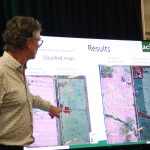Steve Shirtliffe’s research shows that aerial imagery isn’t just for farm yards, it can serve a crop production purpose.
People sometimes have the wrong idea about what satellite imagery can do for agriculture, says Steve Shirtliffe, a researcher and professor in the department of plant sciences at the University of Saskatchewan. “I think there’s this idea sometimes that people think that you can just have a bunch of satellites flying around taking pictures, and […] Read moreStories by Janelle Rudolph
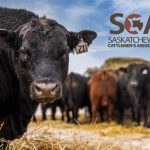
Sask. cattle producers vote for name change
Group’s membership has debated the issue for nearly five years and decided this year to ‘bite the bullet … and carry on’
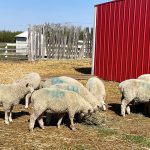
Producers urged to watch sulphate levels
University of Saskatchewan grad student says Prairie levels are high and the impact on ruminants can be severe

Nutrien donates $15 million to U of S AgBio and Engineering
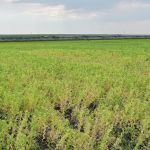
Canola and pulse diseases saw the usual culprits in 2024
Prevalence, incidence and severity numbers must all be taken into account to determine how much worry a disease should prompt
This year’s growing conditions threw many challenges at producers, one of the biggest being crop disease. Pulses and canola were hit hard, seeing high numbers of fields with disease across Saskatchewan. Root rot and blackleg had an average of more than 90 per cent prevalence, while mychosphaerella/ascochyta complex and anthracnose weren’t far behind. Alireza Akhavan, […] Read more
Spot spraying advancements include building algorithms
Advanced spraying systems have benefits, but they also have costs that must be taken into consideration
Spot spraying isn’t a new idea, and the equipment capable of performing selective applications has been around for decades. However, the technology that supports this approach is advancing. Tom Wolf, an application specialist with Agrimetrix Research & Training and Sprayers101, recently shared some of the new research, technology developments, and application techniques during the Western […] Read more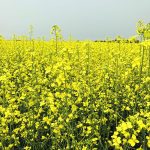
Winter canola looks to hybrids for expansion
Prairie winters are still an uphill battle for winter canola, but improved varieties are being bred in the United States
Glacier FarmMedia – Canola is no longer just a spring crop in parts of North America. According to the U.S. Canola Association, winter canola has become the dominant option in the southern Great Plains. That might not be so surprising to Canadian farmers. It’s a lot warmer in that region than the Canadian Prairies. Winter […] Read more
Researcher tackles problems with zinc fertilizer
Zinc becomes unavailable to plants when it and phosphate are combined in the same granule due to reduced solubility
Glacier FarmMedia – Humans need zinc. It’s essential for our immune systems, wound healing and nerve function, to name a few benefits. However, our bodies don’t produce it naturally. We rely on food, or in the modern world, supplements to get enough. However, a lot of people don’t get enough, and neither do our crops. […] Read more
Peavey Mart announces closures



